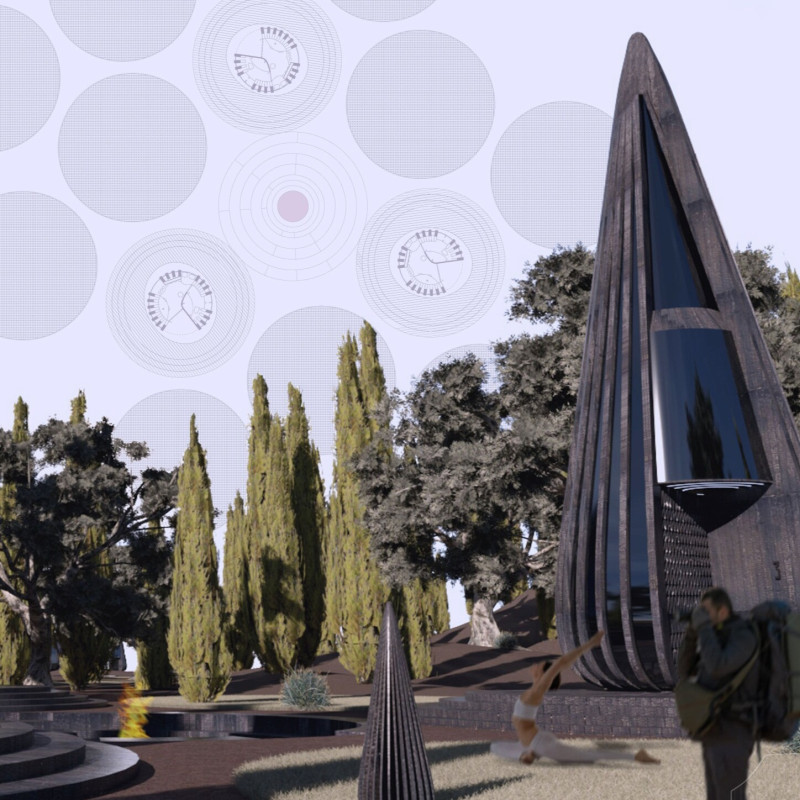5 key facts about this project
At the heart of this project is a clear understanding of its function. Designed to accommodate a blend of residential and community spaces, the architecture promotes interaction and connectivity among its inhabitants. The strategic placement of communal areas encourages social engagement, while private zones offer tranquility and privacy. This duality reflects contemporary living trends, where open, flexible spaces coexist with individual comfort.
The design unfolds across several distinct levels, each thoughtfully articulated to maximize natural light and airflow. Large, strategically positioned windows and openings create a seamless connection between the interior and exterior, allowing for an abundance of natural illumination and an ever-changing play of light throughout the day. The architectural plans reveal a fluidity in movement, guiding occupants through various spaces without obstruction.
Materiality plays a critical role in the overall expression of this architectural project. A careful selection of materials ensures durability and sustainability, reflecting a growing awareness of ecological considerations in contemporary architecture. The primary materials used include reinforced concrete, which provides a robust structural foundation; locally sourced timber, which adds warmth and a natural aesthetic; and low-emissivity glass to promote energy efficiency while maintaining visual transparency. These materials together project a sense of cohesion and belonging, integrating the structure into its urban context.
One unique aspect of this project is its approach to outdoor spaces. The incorporation of green roofs and vertical gardens not only enhances biodiversity but also contributes to the thermal performance of the building. These features help to mitigate the urban heat island effect, demonstrating a proactive stance on environmental sustainability. Through the clever design of outdoor areas, the project also prioritizes the well-being of its users, providing serene retreats that encourage relaxation and leisure.
In terms of architectural design, the aesthetic is characterized by clean lines and a balanced silhouette, creating a modern yet approachable identity. The careful manipulation of forms and volumes produces a rhythm that resonates well with the surrounding urban fabric. This architectural idea of creating dialogue with the environment manifests in the way the building steps back at various levels, offering breathtaking views while providing terraces that extend the living space outdoors.
The project also emphasizes adaptability, envisioning spaces that can evolve over time to meet changing needs. The flexibility of interior layouts allows for adjustments without significant renovations, reflecting a practical sensitivity to the future ambitions of its occupants. This forward-thinking approach situates the architect’s vision within larger discussions about resilience and longevity in architectural design.
In summary, this architectural project is a comprehensive amalgamation of thoughtful design, sustainable practices, and functional living. It serves as a model of how architecture can respond to contemporary challenges and aspirations while fostering community and enhancing quality of life. For those interested in exploring the intricacies of this design further, a review of the architectural plans, sections, and design details will provide deeper insights into the innovative approaches taken throughout this project. Engaging with the architectural presentation will uncover the nuances that make this project a noteworthy example of modern architecture.


 Dimitri Persia
Dimitri Persia 























